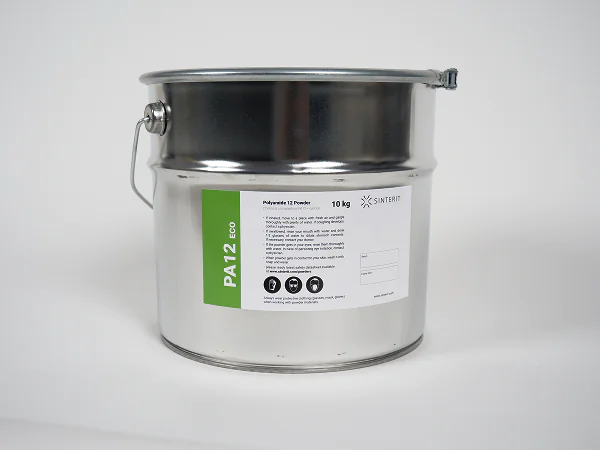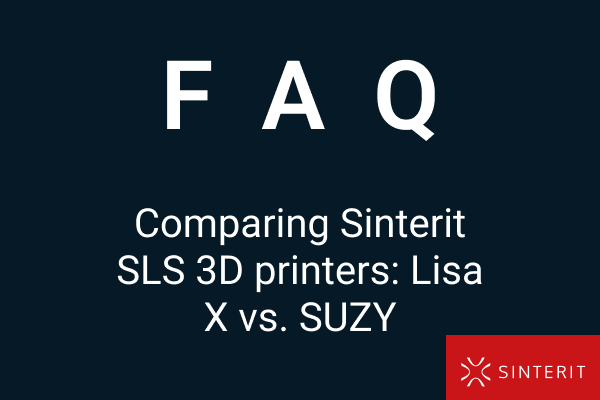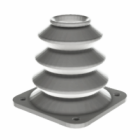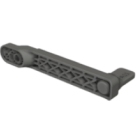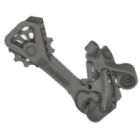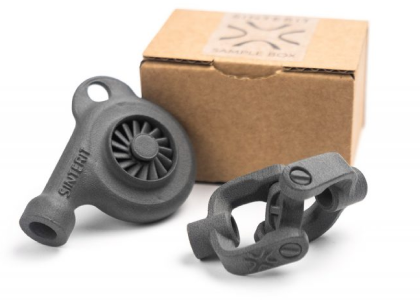How 3D printer service cut downtime and keep industrial operations running
McKinsey & Company Report (2015) highlights that unplanned downtime in manufacturing costs $50 billion annually in the U.S. alone. In the automotive industry, these losses can reach up to $22,000 per minute of downtime. For machinery that relies on high precision or complex assembly lines, downtime gets even more expensive — the complexity of restarting operations adds to the loss.
Deloitte’s Global Survey on Maintenance (2018) confirms the same trend: unplanned downtime costs industries, on average, $260,000 per hour. This figure jumps dramatically in sectors like semiconductors and aerospace, where even short stops cause deep backlogs, simply because the supply chain is too interconnected.
Sinterit has conducted an extensive review, analyzing data from both scientific sources and global case studies, all to build a robust 3D printer maintenance policy that focuses on minimizing production delays and ensuring reliable continuity.
Service plans in industry 4.0 environments
The vision behind a modern service plan in the Industry 4.0 era goes far beyond preventing errors, it’s about protecting income, securing delivery, and never losing trust with the client. It’s no longer just about uptime; it’s about protecting business.
In the context of additive manufacturing, a well-structured 3D printing service plans a pivotal role in securing uninterrupted performance.
This is why a 3D printer maintenance plan today means a structured agreement, clear protocols, defined support, fast 3D printer repair, and technical coverage that matches the machine’s purpose: surpassing industrial reliability.
Ensuring unbreakable continuity with 3D printing service plan
We all know machines break. It’s not a surprise, it’s a fact. But the real question is: what happens next? This is where the difference is made. And that’s where our R&D department designed a data-driven program, scaling 3D printer service to over 80 countries with trained local partners.
Based on the service data analysis from existing field deployments, we have identified that approximately 90% of failure scenarios in our SLS 3D printers can be resolved immediately, either through direct local intervention or remote diagnostics executed by our support engineers. This is possible due to two factors: the modular design of our current printer generation, which allows non-technical teams to execute replacements / interchange parts seamlessly, and the integration of clear failure-mode tracking protocols embedded in the firmware.
However, for the remaining 10%, the prevention factor still applies, ensuring that the printer won’t need to return to headquarters. This will be addressed in the next section.
Predictive maintenance | the battleproof
Harvard Business Review confirms:
Companies using predictive maintenance save 10–30% on service costs and cut downtime by up to 50%.
- This is exactly why every Sinterit machine is embedded with logic for early detection:
Maintenance alerts, powder refill indicators, filter warnings — all integrated. - Our 3D printing service philosophy: Let the printer talk before it breaks.
Why? Because our clients don’t run SLS 3D printers for display. They run them for critical production, R&D, and prototyping in time-sensitive environments.
We tracked dozens of real-world use cases — and prediction came out as the clear gamechanger. Two that prove the point:
Renesas Semiconductor (2021)
- A fire at the Renesas factory in Japan shut down operations for weeks.
- Why? The backup system wasn’t integrated properly.
- Impact: $2 billion in lost revenue, halted chip supply for global auto brands. All could’ve been avoided with preventive logic and tested continuity. With a preventive 3D printing service protocol, this could’ve been avoided.
Toyota (2016)
- A small supplier with no strong service plan broke down — and the entire Toyota production line had to stop.
- Result: $275 million in losses.
- Root cause: No predictive fallback, no distributed service layer, no control.
An exemplary service plan | Sinterit guidelines
1. Hardware repair coverage
If your printer breaks due to hardware defects (material or manufacturing faults), our engineering department performs the 3D printer repair free of charge. This is the foundation of every plan.
2. PrintPro Remote Assist
Engineers can also remotely support technical issue resolution, assist with calibration, and answer troubleshooting questions — all via secure connection. This accelerates 3D printer maintenance and minimizes physical downtime.
3. PrintPro Masterclass
An in-depth training program. It raises your level to a dynamic operator, it covers:
- How to operate your printer correctly
- Maintenance best practices
- Optimization techniques to improve print quality and efficiency
Perfect for scaling in-house 3D printing service readiness.
4. Shadow Manufacturing
If your printer is down and needs repair, Sinterit can print parts for you at their facility. This unique 3D printing service feature protects your workflow.
5. Service Unit (loaner printer)
While your printer is being repaired, Sinterit sends you a replacement unit. This avoids production gaps due to 3D printer repair.
6. Flexible duration
You can choose the plan for 1, 2, 3, 4, or 5 years.
The longer the plan, the better the value per year. You can renew the plan at any time, up to 5 years of total coverage.
Pricing structure overview
| 1 Year | 2 Years | 3 Years | 4 Years | 5 Years | ||||||
|---|---|---|---|---|---|---|---|---|---|---|
| Lisa X | Suzy | Lisa X | Suzy | Lisa X | Suzy | Lisa X | Suzy | Lisa X | Suzy | |
| Standard warranty | Included | Included | 7,750€ | 5,790€ | 11,250€ | 8,450€ | 14,550€ | 10,990€ | 17,650€ | 13,350€ |
| Online repair | ||||||||||
| Repair at customer site | ||||||||||
| Repair at Sinterit | ||||||||||
| Extended warranty | 3,990€ | 2,990€ | ||||||||
| Standard warranty | ||||||||||
| Shadow Manufacturing | ||||||||||
| Service Unit | ||||||||||
| PrintPro Remote Assist | ||||||||||
| PrintPro Remote Masterclass | ||||||||||
What’s included in which version?
| Feature | Warranty | Extended Plan |
|---|---|---|
| Hardware repair | ✅ | ✅ |
| Repair at customer site | ❌ | ✅ |
| Repair at Sinterit | ✅ | ✅ |
| Shadow Manufacturing | ❌ | ✅ |
| Service Unit (replacement) | ❌ | ✅ |
| Remote Assist | ❌ | ✅ |
| Remote Masterclass | ❌ | ✅ |
How does the Service Plan work?
- Buy a Lisa X or Suzy printer with a Service Plan bundled.
- You immediately get access to all support features covered by the plan.
- When it’s near expiry, you can renew to continue coverage — up to a total of 5 years.
- During repairs, you get:
- emergency printing by Sinterit (Shadow Manufacturing),
- a replacement printer sent to you.
- emergency printing by Sinterit (Shadow Manufacturing),
- Your team can request expert help remotely, and even train new employees via the Masterclass.
Example scenario
You buy a Lisa X with a 3-year Service Plan (€11,250):
- For 3 full years, you get free repairs, a loaner printer during downtime, remote support, training, and even Sinterit printing your parts if needed.
- If your printer fails in year 2, you’re fully covered — no lost production or costs.
- Without this plan? A major failure = shipping, repair fees, lost time, and zero backups.
FAQ
How can unplanned downtime be minimized in 3D printing operations?
By implementing a comprehensive 3D printer service plan, including predictive maintenance strategies, and having a robust local support network, companies can reduce downtime significantly. Data-driven insights and preventive maintenance protocols ensure faster 3D printer repair and less disruption to production, ultimately improving efficiency.
How does Sinterit ensure continuity and minimize the risk of breakdowns in 3D printing machines?
Through a structured 3D printer service plan, Sinterit guarantees rapid response times locally across 80+ countries. The inclusion of interchangeable parts in all current models allows non-technical teams to handle routine repairs, ensuring minimal downtime. 3D printer maintenance is simplified, reducing the need for machines to be returned to headquarters, enhancing overall service reliability.
What is the impact of predictive maintenance on 3D printer performance and operational efficiency?
Predictive maintenance drastically reduces maintenance costs by 10-30% and cuts downtime by up to 50%, as shown by studies such as Harvard Business Review. By identifying potential failures in advance, companies can address minor issues before they evolve into costly problems, securing production continuity and optimizing 3D printer service processes for long-term success.
 Author: Adrian Moreno
Author: Adrian Moreno
Senior Consultant: Leads global adoption of SLS technology, helping engineers and businesses define how to achieve advanced physical properties for specialized sectors from the very first step.
